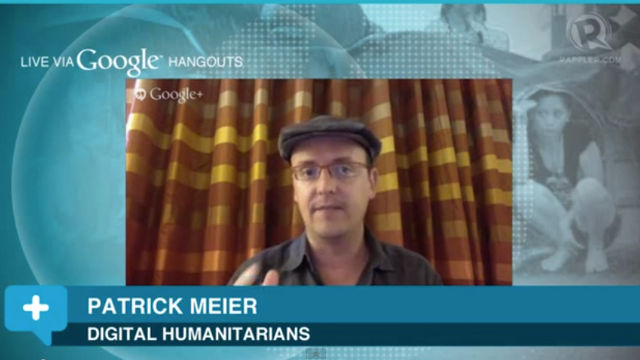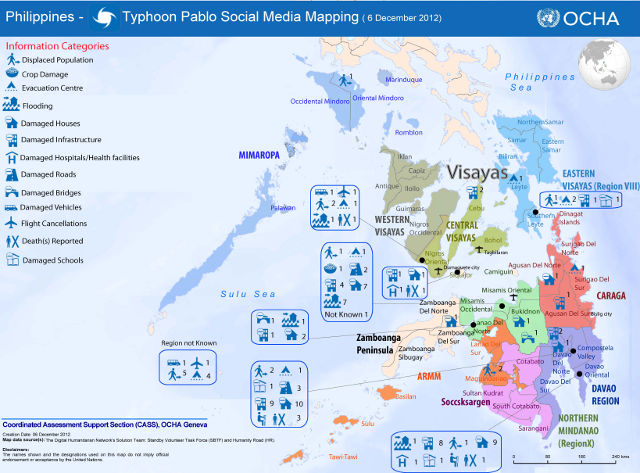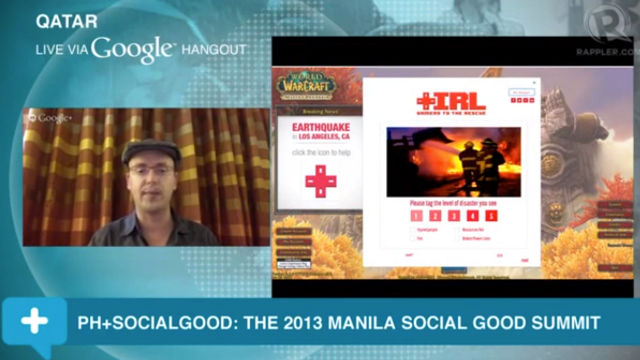SUMMARY
This is AI generated summarization, which may have errors. For context, always refer to the full article.

MANILA, Philippines – Patrick Meier, Director of Innovation at the Qatar Foundation Computing Research Institute (QCRI), had a lot to talk about when it came to big data in the midst of a crisis.
Speaking to the participants of the Manila Social Good Summit from Qatar via Google Hangouts, he explained how there was more data available for people now through social media and filtering all the data to provide accurate and timely information was important in the middle of a disaster.
Data stagnation in a crisis
His premise: “[the] vast volume and velocity of information can be as paralyzing as the absence of information to support and mobilize humanitarian response.”
The result was data stagnation: the inability of disaster response teams to address reports and act on them in a timely manner due to the volume of data and noise from unneeded social media information.
Meier advocated the use of a combination of human and machine computing to help solve or otherwise mitigate stagnation in big crisis data. Machines would process information quickly which humans could then verify and act upon as needed.
Typhoon Pablo mapped
Citing the Philippines as an example of social media working well in a disaster, Meier pointed to how the Philippines used social media to not only work through disaster response in the midst of Typhoon Pablo (Bopha), but to also prepare for it by the creation of government-sponsored hashtags before the typhoon made landfall.
One consequence of this action appeared to be an analysis of the data coming from tweets during the first two days of Typhoon Pablo. The United Nations Office for the Coordination of Humanitarian Affairs (UNOCHA) activated the Digital Humanitarian Network (DHN) to look at the tweets from that time for tweets with images or video that could be tagged by location. The DHN had to do this in 12 hours.
They were able to complete the task with the help of the Crowdcrafting website and its worldwide volunteer team to aid with processing the information.

The result was 100 data points, with the georeference data being made turned into a map by UNOCHA within 30 minutes of the data reaching them. This became the first official UN crisis map sourced from social media content shared on twitter in real time and processed using open-source microtasking.
Applying Human Computing
Meier then discussed applications for such human computing to work in disaster response, citing two possibilities to harness worldwide human potential to help people in a calamity.
Using a new streamlined service made by Meier and his team at QCRI called MicroMappers, people could use an app to verify disaster images in real-time when they chose to. The only thing needed was to find people willing to take the time to use the service.
Once conceptual application that would enable this was of a disaster Recaptcha. Recaptcha, a common verification system add-on, tasks people with verifying words scanned from physical text. A disaster Recaptcha would allow people to aid in real-time verification of photos and the severity of a an event occurring elsewhere in the world.
Tying into this was the concept of The Internet Response League. With the help of conscientious online gamers, IRL would allow gamers who opt into being a part of the initiative to take a few extra seconds to answer a disaster Recaptcha before entering a game.
Advanced computing and disaster response
The development of machine computing programs designed to learn and sift through big data would help speed up the process of finding relevant information that humans could verify and address.
AIDR, the Artificial Intelligence for Disaster Response, would help in this regard. AIDR has a set of classifiers to find different types of crisis-related and crisis support information on Twitter. These could then be verified by volunteers and people who offer to help through microtasking initiatives. The more human tagging of machine-sorted data is done, the more accurate the classifiers get and the easier the process gets.
The issue then becomes making this data available to responders who can go into the areas to provide relief or rescue operations.
Ultimately, the hope is that countries can develop these platforms, where people, media, and government agencies can work together to create real-time information for real-time response.
Watch the video of Patrick Meier’s talk below:
– Rappler.com
Add a comment
How does this make you feel?

There are no comments yet. Add your comment to start the conversation.